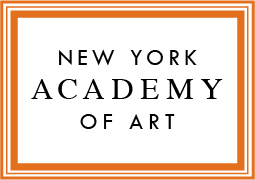Arriving at a new place, with nothing but time; the first thing one does is seek out its most vital parts to assess which pieces of this new world can be absorbed and brought back to the soul. At the start of my stay here, I was in a funk. As much as I was ecstatic about my surroundings, ready and willing to work, I couldn’t get myself out of the sketchbook, as with everyone; it seemed to take a bit of time before we really sank into our practice.
As time and momentum built up, some very exciting things began to happen in the studio.
My work has found itself in wild flux as well. I had been having some trouble escaping the confines of my sketchbook, but ended up stumbling upon the gutted remains of an industrial elevator being fixed within the Spinnerei. I took them back to my studio, and spent 3 weeks reorganizing and piecing back together the parts into freestanding and wall sculptures, incorporating bike parts, broken casts, antique cabinets, light fixtures, telephones, street signs, tubing, and even fly tape; still covered in flies. The project eventually turned into a (still ongoing) 12-foot installation, now in the main hall of our shared space, and while I don’t think I can bring much of it home; I found the temporality of the project broke down some psychological barriers in my art-making. Now into the second half of our stay, I’ve snapped back into two-dimensional work, experimenting with oil on canvas for the first time in a number of years. Oddly, I haven’t made a single drawing outside of my sketchbook in all of my time here. It must’ve rejuvenated something in me though, because I’ve become completely seduced by paint. While I don’t think I could ever bring myself to abandon my large drawings; I can’t wait see what kind of language will pull itself out, back in the Academy studios.
Esteban’s new painting is easily one of my favorites. It depicts an outlandishly colorful and impasto driven kind of “80’s party” aesthetic with a twist. The figures seem to be inspired by an image of some Spinnerei workers from its days under the GDR, as a Cotton Mill. It became a full-fledged dive into painterly buildup, chunks of saturation climbing off the canvas’ surface, colors swimming in and out of one another in the faces of the figures. Having shared a studio for nearly two months now, I’ve steadily observed a conscience abandonment of the finesse of his hand, for the sake of a kind of absurd theatricality.
Hannah has chosen to use our travels as a conduit to push her work in an alternative direction. It seems she’s embracing a new process as well; one that pulls away for the cultural weight and pointed deliberation of her Holocaust images. Instead she’s chosen to derive references from her personal history, with a comparatively organic addition-and-removal of content, pushing towards narrative that is more intimate in subject and visceral in content; while allowing the viewer’s projections to complete her stories. Her new paintings seem to carry a sentimentality that was evident in her previous work, but is instead geared towards the intimacies and precious moments of her own life.
Camila has been exploring figures of authority, versus those of alienation and victimhood as its bi-product and polarity; and how relationships between representation and gestural abstraction can serve to support her conversations. She has been playing with the extent to which extensive rendering is necessary to convey a narrative; as well as how that kind of restraint, for the sake of leaving the open gesture, can leave space for the viewer’s imagination. On top of that, she seems to have stumbled into a kind of re-contextualized use of abstraction, as a potential narrative tool when placed appropriately in relation to the representational parts of her images. I’m excited to see how its use begins to evolve. 
On the 13th of July, We had our exhibition at a castle called the Schloss in a small town just outside of Leipzig, known as Machern. The portion of the castle designated for the show was covered in bright pink and blue pastel interiors, chandeliers and Victorian style trim and furniture. The space was sliced into varying, sometimes oddly shaped rooms, emulating a strangely elegant ‘Alice in Wonderland’ feel. After a solid day of installation, all of our work (in its seemingly disjointed variety relative to one another) ended up as a great fit for the space. At the opening itself, we were shocked by how above and beyond the castle’s employment had gone to entertain its guests. There was champagne being brought around throughout the opening, a live classical pianist, a separate reception room, in which our fantastic coordinator, Kristina, gave a speech welcoming the guests, introducing us and our work. On top of a surprisingly high turnout, given its location outside of Leipzig, the exhibition was even written about in two newspapers!
Thus far, the experience has been a wild one, with each of our practice’s driven in some unexpected directions. While it is exhilarating to observe one another in such significant transition; one cannot help their own excitement for what is to come next year.
###
Matthew Comeau (MFA 2015) is joined by Hannah Stahl (MFA 2015), Camila Rocha (MFA 2015), and Esteban Ocampo (MFA 2015) in Leipzig, Germany for a two-month Residency. The students will share their adventures in Germany throughout the summer on the Academy’s blog. Stay tuned!


